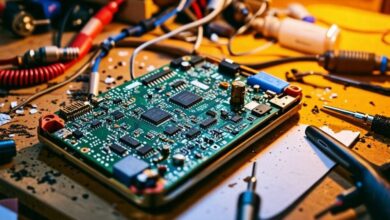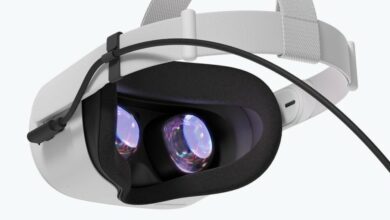Choosing the Right Framework for Your Artificial Intelligence Training: A Comparative Analysis

Introduction:
In the ever-evolving landscape of Artificial Intelligence (AI), choosing the right framework for your AI training is a critical decision that can significantly impact the success of your projects. With several frameworks available, each offering unique features and advantages, a comparative analysis becomes essential for informed decision-making. In this article, we will explore the key considerations in choosing the right framework for your AI training, providing a comprehensive comparative analysis of some prominent options.
Understanding AI Frameworks:
What are AI Frameworks?
AI frameworks are software tools that provide a foundation for developing and training AI models. They offer a set of pre-built functions and libraries that streamline the development process, making it more accessible and efficient for researchers and developers.
The Importance of Choosing the Right Framework:
The choice of an AI framework plays a crucial role in the success of AI projects. Factors such as ease of use, scalability, community support, and compatibility with your specific project requirements must be carefully considered. A well-suited framework can enhance development speed, model accuracy, and overall project success.
TensorFlow: Power and Versatility:
Overview of TensorFlow:
Developed by Google, TensorFlow is one of the most popular and versatile AI frameworks. It supports a wide range of applications, from image and speech recognition to natural language processing. TensorFlow’s open-source nature and extensive community support contribute to its widespread adoption.
Strengths of TensorFlow:
Scalability:
TensorFlow excels in scalability, making it suitable for both small-scale projects and large-scale, enterprise-level applications. Its distributed computing capabilities enable seamless scaling across multiple processors or devices.
Flexibility:
TensorFlow’s flexibility allows developers to deploy models on various platforms, including mobile devices and the cloud. This adaptability is particularly advantageous for businesses with diverse deployment needs.
Comprehensive Ecosystem:
TensorFlow boasts a comprehensive ecosystem with additional tools and extensions, such as TensorBoard for visualization and TensorFlow Lite for mobile and edge devices, enhancing the overall development experience.
PyTorch:
Simplicity and Research-Friendly
Overview of PyTorch:
PyTorch has gained popularity for its simplicity and dynamic computational graph, making it a preferred choice among researchers and developers. Developed by Facebook, PyTorch is known for its intuitive syntax and ease of debugging.
Strengths of PyTorch:
Dynamic Computational Graph:
PyTorch’s dynamic computational graph allows for more flexibility in model development and debugging. Researchers find this feature particularly beneficial when experimenting with new models and architectures.
Ease of Use:
With a more Pythonic and intuitive syntax, PyTorch is often considered more user-friendly. This ease of use contributes to faster prototyping and experimentation, crucial in research and development environments.
Community and Research Focus:
PyTorch has a vibrant community, especially in the research community. Researchers appreciate its focus on enabling experimentation and exploration, making it an ideal choice for academic and research-oriented projects.
Keras:
High-Level Abstraction and Simplicity
Overview of Keras:
Keras is not a standalone framework but rather a high-level neural networks API that can run on top of TensorFlow, Theano, or Microsoft Cognitive Toolkit (CNTK). Known for its simplicity and ease of use, Keras provides a user-friendly interface for building and training neural networks.
Strengths of Keras:
Simplicity:
Keras excels in simplicity, allowing developers to build complex neural network architectures with minimal code. Its user-friendly interface is particularly beneficial for those new to deep learning.
Compatibility:
As a high-level API, Keras is compatible with multiple backend frameworks, including TensorFlow. This versatility allows developers to leverage the strengths of different frameworks while enjoying the simplicity of the Keras interface.
Rapid Prototyping:
Keras is renowned for its rapid prototyping capabilities. Developers can quickly iterate through different models and architectures, making it an excellent choice for projects requiring fast experimentation.
Choosing the Right Framework: Considerations and Best Practices:
Project Requirements and Goals:
The first step in choosing the right framework is understanding your project requirements and goals. Consider factors such as the nature of the task (image recognition, natural language processing, etc.), scalability needs, and deployment platforms. TensorFlow’s scalability might be crucial for enterprise-level applications, while PyTorch’s flexibility may be more suitable for research-oriented projects.
Development Team Expertise:
The expertise of your development team is a critical factor. If your team is already familiar with a specific framework, leveraging that expertise can streamline development and troubleshooting processes. Additionally, consider the availability of learning resources and community support for continuous skill development.
Model Complexity and Experimentation:
For projects requiring complex neural network architectures and extensive experimentation, a framework like PyTorch, with its dynamic computational graph and research-friendly environment, may be preferable. On the other hand, if your project involves straightforward tasks and rapid prototyping, Keras’ simplicity could be advantageous.
Scalability and Deployment:
Scalability is a crucial consideration, especially for projects with varying computational demands. TensorFlow’s ability to scale seamlessly across multiple processors or devices makes it a strong contender for large-scale applications. Conversely, if your project involves deploying models on resource-constrained devices, Keras may be a more practical choice.
Conclusion:
Choosing the right framework for your Artificial Intelligence training is a pivotal decision that requires careful consideration of various factors. TensorFlow, PyTorch, and Keras each offer unique strengths, catering to different project requirements and development preferences. By understanding the specific needs of your project, the expertise of your team, and the scalability requirements, you can make an informed decision that sets the foundation for successful AI training and innovation. Whether you prioritize power and versatility, simplicity and research-friendliness, or high-level abstraction, the right framework can be the key to unlocking the full potential of your AI projects.





